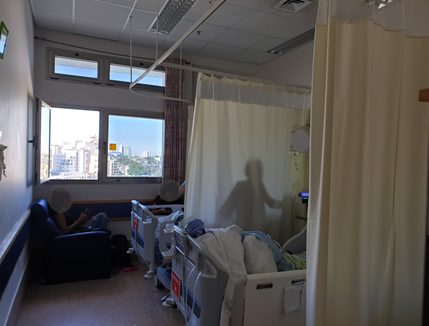Light for Health
Technion Research: Daylighting Design Improves Patient Outcomes
Rinat Hadashi Gannon, a master’s student in the Technion – Israel Institute of Technology’s Faculty of Architecture and Town Planning under the supervision of Faculty Dean Professor Guedi Capeluto, has developed an approach designed to improve health outcomes in inpatient rooms through the use of daylight.
Light significantly affects our physiological and psychological health, wellbeing, and performance and plays a substantial role in regulating the circadian rhythm, modulating the cycle of sleep and wakefulness, and neurological and hormonal processes that affect our health.
Life in modern Western society is marked by a lack of exposure to natural light. Around 90% of our time is spent indoors where we are exposed to artificial light, which disrupts our biological clock and is liable to take a toll on our health. Previous research has shown that the incorporation of daylight in inpatient wards contributes to lower consumption of medications, reduced length-of-stay, improved sleep quality, a reduction in depression and stress, and even a decrease in mortality.
The Technion researchers developed new tools and methods to evaluate daylight in inpatient rooms and to provide design guidelines for improved inpatient health. According to their findings, even architectural means that are relatively simple may improve daylight availability in inpatient wards, including full-opening windows, overhangs and adjustable blinds, and light shelves. The researchers emphasize that the evaluation of daylight availability in the hospitalization period must take into consideration seasonal changes in different orientations.
Hadashi Gannon and Prof. Capeluto believe that their model could contribute to the evaluation of daylighting performance in the built environment and can also be applied in other contexts such as work environments and educational institutions. They also think their model can guide and benefit design and positively impact the psychological and physical state of users, their alertness and concentration, and aspects such as performance, health, and wellbeing.
The location chosen for conducting the research is a side lit two-bed inpatient room that is common in Israeli hospitals. The semi-private patient room was chosen, since patients in the beds far from the window are exposed to insufficient daylight due to the distance from the window, the screens between the beds, and control of the curtains and blinds by the patient whose bed is near the window.
To ensure that the computer simulations reflected real-life conditions, seasonal measurements of daylight were made in inpatient rooms at Soroka Medical Center. These measurements were used to calibrate the computer model.





